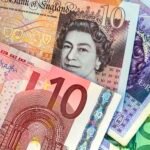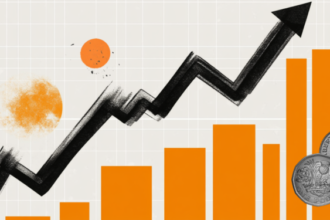- GBP/USD edges higher due to the rising expectations of a 50-basis point rate cut by the Fed in September.
- CME FedWatch tool indicates 67.5% odds of a 50-basis point Fed rate cut in September, up from 13.2% last week.
- The British Pound may struggle due to rising odds of a quarter-basis point rate cut by the BoE in August.
GBP/USD retraces its recent losses, trading around 1.2710 during the Asian session on Wednesday. This upside could be attributed to the tepid US Dollar (USD) following the rising expectations of a more aggressive rate cut starting in September after the weaker US employment data in July raised the fear of a looming US recession.
According to the CME FedWatch tool, there is now a 67.5% probability of a 50-basis point (bps) interest rate cut by the US Federal Reserve (Fed) in September, up from 13.2% a week earlier.
According to Reuters, Federal Reserve Bank of San Francisco President Mary Daly noted on Monday that “risks to the Fed’s mandates are becoming more balanced and that there is openness to the possibility of cutting rates in upcoming meetings.” Additionally, Chicago Fed President Austan Goolsbee stated that the central bank is prepared to act if economic or financial conditions worsen.
Across the pond, the Pound Sterling (GBP) faced challenges as the Bank of England (BoE) implemented a widely anticipated 25-basis point rate cut at its August meeting. Additionally, market expectations now include the possibility of two further quarter-point rate cuts by the BoE by December.
The British Pound’s upside potential could be limited by a general risk aversion. Concerns about escalating Middle East conflicts were heightened after Iran-backed Hezbollah launched dozens of missiles at Israel in response to the assassination of Hamas leader Ismail Haniyeh by an Israeli airstrike in Tehran.
British Pound PRICE Today
The table below shows the percentage change of British Pound (GBP) against listed major currencies today. British Pound was the strongest against the Japanese Yen.
| USD | EUR | GBP | JPY | CAD | AUD | NZD | CHF | |
|---|---|---|---|---|---|---|---|---|
| USD | 0.16% | -0.15% | 2.00% | -0.08% | -0.55% | -0.96% | 0.73% | |
| EUR | -0.16% | -0.31% | 1.83% | -0.24% | -0.75% | -1.12% | 0.62% | |
| GBP | 0.15% | 0.31% | 2.13% | 0.07% | -0.44% | -0.76% | 0.89% | |
| JPY | -2.00% | -1.83% | -2.13% | -2.01% | -2.51% | -2.85% | -1.22% | |
| CAD | 0.08% | 0.24% | -0.07% | 2.01% | -0.49% | -0.84% | 0.83% | |
| AUD | 0.55% | 0.75% | 0.44% | 2.51% | 0.49% | -0.31% | 1.34% | |
| NZD | 0.96% | 1.12% | 0.76% | 2.85% | 0.84% | 0.31% | 1.66% | |
| CHF | -0.73% | -0.62% | -0.89% | 1.22% | -0.83% | -1.34% | -1.66% |
The heat map shows percentage changes of major currencies against each other. The base currency is picked from the left column, while the quote currency is picked from the top row. For example, if you pick the British Pound from the left column and move along the horizontal line to the US Dollar, the percentage change displayed in the box will represent GBP (base)/USD (quote).
Pound Sterling FAQs
The Pound Sterling (GBP) is the oldest currency in the world (886 AD) and the official currency of the United Kingdom. It is the fourth most traded unit for foreign exchange (FX) in the world, accounting for 12% of all transactions, averaging $630 billion a day, according to 2022 data. Its key trading pairs are GBP/USD, aka ‘Cable’, which accounts for 11% of FX, GBP/JPY, or the ‘Dragon’ as it is known by traders (3%), and EUR/GBP (2%). The Pound Sterling is issued by the Bank of England (BoE).
The single most important factor influencing the value of the Pound Sterling is monetary policy decided by the Bank of England. The BoE bases its decisions on whether it has achieved its primary goal of “price stability” – a steady inflation rate of around 2%. Its primary tool for achieving this is the adjustment of interest rates. When inflation is too high, the BoE will try to rein it in by raising interest rates, making it more expensive for people and businesses to access credit. This is generally positive for GBP, as higher interest rates make the UK a more attractive place for global investors to park their money. When inflation falls too low it is a sign economic growth is slowing. In this scenario, the BoE will consider lowering interest rates to cheapen credit so businesses will borrow more to invest in growth-generating projects.
Data releases gauge the health of the economy and can impact the value of the Pound Sterling. Indicators such as GDP, Manufacturing and Services PMIs, and employment can all influence the direction of the GBP. A strong economy is good for Sterling. Not only does it attract more foreign investment but it may encourage the BoE to put up interest rates, which will directly strengthen GBP. Otherwise, if economic data is weak, the Pound Sterling is likely to fall.
Another significant data release for the Pound Sterling is the Trade Balance. This indicator measures the difference between what a country earns from its exports and what it spends on imports over a given period. If a country produces highly sought-after exports, its currency will benefit purely from the extra demand created from foreign buyers seeking to purchase these goods. Therefore, a positive net Trade Balance strengthens a currency and vice versa for a negative balance.





















